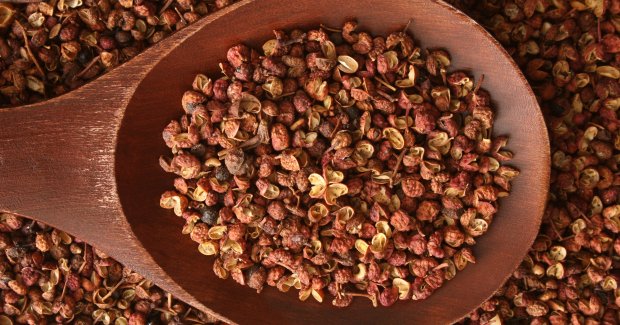Szechuan peppers cause vibrator-like sensation

THE UNIQUE SENSATION that Szechuan pepper has on the lips and mouth is equivalent to a vibrator, new research has found.
In a paper published by Proceedings of the Royal Society B last week, researchers in London examined the tingling sensations that the active ingredient in Szechuan pepper, sanshool, produces on the tongue and lips. No other food ingredient is known to cause that feeling.
Interestingly, they found the kick you get from eating a Szechuan dish is sensed via the touch pathways, one of the lead researchers on the paper, Dr Nobuhiro Hagura from the Department Institute of Cognitive Neuroscience Institution at University College London, told Australian Geographic.
“The buzzing, or tingling, sensation on the tongue and lips when eating Szechuan pepper is due to the pepper chemically activating the fibres in the brain that we use to register light touch,” he says.
Better understanding of this link between chemical pathways and physical sensations could have important applications in pain management.
Vibrator versus pepper
Participants in the experiments judged whether the tingling sensation induced by the sanshool was at a higher or lower frequency to mechanical vibration applied to the finger.
The perceived frequency was judged to be about 50 taps per second, similar to that of a vibrator, which is within the exact range that the light touch fibres respond to best.
To confirm whether the peppers were in fact operating through the light touch fibres, as Nobuhiro and his colleagues suspected, they set up a secondary experiment.
For this test, continuous mechanical vibration was applied to the lips to make the light touch fibres ‘tired’. If sanshool really was activating the now-fatigued light touch fibres, the tapping frequency would seem to slow down, the team hypothesised. “And that was exactly what we found,” says Nobuhiro.
Nobuhiro explains that daily experiences such as grabbing a cup, activate many different fibres in our brain which provide us with information about an object, such as how heavy it is or what it feels like to hold.
Because the Szechuan pepper appears to selectively activate the light physical touch fibres, studying this link further may help researchers to understand which specific fibre activations manifest as particular physical sensations.
Better pain management
Nobuhiro hopes that this will also lead to new discoveries in pain management. “Tingling sensations occur in many chronic pain conditions, but remain poorly understood,” he says.
Mark Hutchinson, pain researcher at the University of Adelaide, says that while he remains reserved about drawing any conclusions, Nobuhiro’s research is intriguing.
“Given that touch can become painful in chronic pain, then perhaps this identification of Szechuan pepper as a chemical trigger of this pathway, might yield some novel activator of this pathway in a ‘pain’ state,” Mark says “But this research is only pointing in this direction at this stage, as far as I can tell.”
Nobuhiro hopes that further laboratory studies of the tingling sensations caused by sanshool could help to clarify the brain processes underlying these sensations and how they are related to pain, potentially leading to better pain management techniques.
RELATED STORIES
Why chillies are hot: the science of heat
World’s hottest chilli grown by Aussies
The world’s 10 hottest chillies
Sandalwood: the sweet-smelling secret from WA
Why some chillies are hotter than others
Exploding watermelons pose hazard in China
Scientists aim for the ultimate macadamia
Native honey a sweet antibacterial
Ask an expert: Why do bananas ripen fruit?
Food: Gourmet in the outback
Gardening: From little things big things grow

